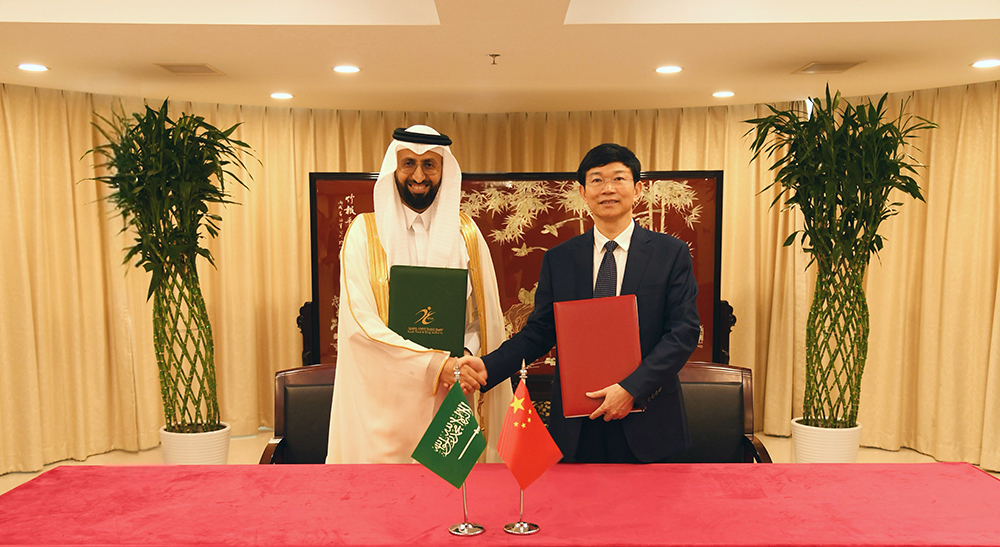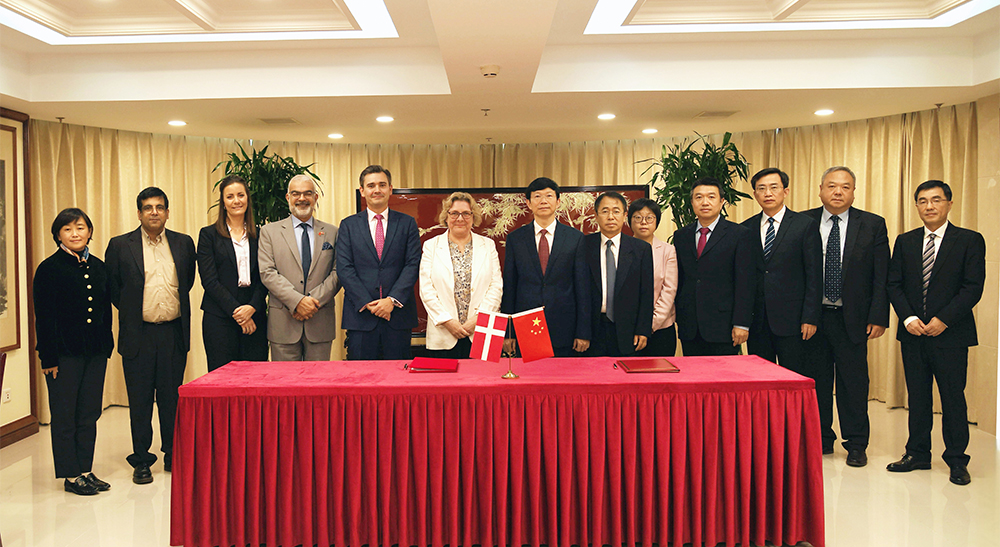在体外受精技术中经验性应用生长激素是无效的吗?
时间:2025-04-03 12:11:55 热度:37.1℃ 作者:网络
STUDY QUESTION
研究问题
Does adjuvant growth hormone (GH) therapy in GnRH antagonist cycles improve reproductive outcomes in the general IVF population?
在GnRH拮抗剂周期中,生长激素(GH)辅助治疗能否改善一般人群的妊娠结局?
SUMMARY ANSWER
结论
Empiric adjuvant GH therapy in GnRH antagonist cycles does not improve IVF stimulation results or reproductive outcomes, including implantation, miscarriage, and clinical pregnancy rates.
在GnRH拮抗剂周期中,经验性应用GH辅助治疗不能改善IVF的卵巢刺激情况或生殖结局,包括种植率、流产率和临床妊娠率。
WHAT IS KNOWN ALREADY
已知情况
Previous evidence regarding the benefits of GH therapy in IVF cycles has been inconclusive due to the lack of well-designed, large-scale randomized controlled trials (RCTs) in the general IVF population.
由于缺乏在IVF一般人群中的设计良好的大规模随机对照试验(RCT),既往有关在IVF周期中使用GH的获益情况尚不能肯定。
STUDY DESIGN, SIZE, DURATION
研究设计、规模、持续时间
This is a phase III open-label RCT involving 288 patients undergoing antagonist IVF cycles at the Ovo clinic in Montreal, Canada, between June 2014 and January 2020. Patients were randomly assigned at a 1:1 ratio to either the GH or control group. The intervention group received daily 2.5 mg subcutaneous injections of GH from Day 1 of ovarian stimulation until the day of oocyte retrieval, while the control group received standard ovarian stimulation without any adjuvant therapy.
这是一项III 期开放标签随机对照试验,试验纳入了 2014 年 6 月至 2020 年 1 月期间在加拿大蒙特利尔 Ovo 诊所接受IVF拮抗剂方案治疗的 288 名患者,以1∶1的比例随机分为GH组和对照组。治疗组从卵巢刺激第1天开始每天皮下注射生长激素2.5 mg直至取卵日,对照组仅进行常规卵巢刺激,不做任何辅助治疗。
PARTICIPANTS/MATERIALS, SETTING, METHODS
参与者/材料、设置、方法
Patients were expected normal responders. All embryo transfers, both fresh and frozen, resulting from the studied IVF cycle were included in an intention-to-treat and per-protocol analyses. The primary outcome was the clinical pregnancy rate, while secondary outcomes included the number of retrieved oocytes, good-quality embryos, maturation, fertilization, implantation, and miscarriage rates.
患者均为预期卵巢正常反应者。在所有新鲜和冷冻胚胎移植的IVF周期都纳入研究,并进行意向性分析(ITT)和预方案分析。主要结局指标为临床妊娠率,次要结局指标包括获卵数、优质胚胎数、卵泡成熟率、受精率、着床率和流产率。
MAIN RESULTS AND THE ROLE OF CHANCE
主要结果和偶然性
A total of 288 patients were recruited and randomly assigned at a 1:1 ratio to either the GH or the control group. After excluding cycle cancellations and patients who did not undergo transfer, 105 patients remained in each group. The overall mean age was 38.0 years, the mean BMI was 25.11 kg/m2 and the mean anti-Müllerian hormone was 2.51 ng/ml. The cycle characteristics were similar between both groups. No differences were observed regarding the total dose of gonadotropins (4600 versus 4660 IU for the GH and control groups, respectively, P = 0.752), days of stimulation (11.4 versus 11.7 days, P = 0.118), and endometrial thickness (10.63 versus 10.94 mm, P = 0.372). Both the intention to treat (ITT) and per protocol analyses yielded similar results for stimulation outcomes. In the ITT analysis, no differences were found in the number of follicles ≥15 mm (7.8 versus 7.1, P = 0.212), retrieved oocytes (11.7 versus 11.2, P = 0.613), mature oocytes (8.5 versus 8.6, P = 0.851), maturation rate (73.8 versus 78.4%, P = 0.060), fertilization rate (64.3 versus 67.2%, P = 0.388), and good quality embryos (2.5 versus 2.6, P = 0.767). Reproductive outcomes in fresh embryo transfer showed no difference for implantation rate (38.2 versus 39.5%, P = 0.829), miscarriage rate (26.5 versus 31.1%, P = 0.653), clinical pregnancy rate (43.6 versus 50.0%, P = 0.406, rate difference, 95% CI: −0.06 [−0.22, 0.09]), and live birth rate (32.1 versus 33.3%, P = 0.860). The number of embryos needed to achieve a clinical pregnancy was 3.0 versus 2.5 in the GH and control groups, respectively. Similarly, reproductive outcomes in first frozen embryo transfer showed no difference for implantation rate (31.6 versus 45.3%, P = 0.178), miscarriage rate (28.6 versus 26.3%, P = 0.873), clinical pregnancy rate (35.1 versus 44.2%, P = 0.406, P = 0.356, rate difference, 95% CI: −0.09 [−0.28, 0.10]), and live birth rate (22.8 versus 32.6%, P = 0.277). The number of embryos needed to achieve a clinical pregnancy was 3.1 versus 2.4 in the GH and control groups, respectively.
本试验共招募了288例患者,并以1∶1的比例将其随机分为GH组或对照组。排除取消周期和取消移植的患者后,两组各有105例。患者平均年龄38.0岁,平均BMI 25.11 kg/m2,抗苗勒管激素(AMH)平均值2.51 ng/ml。两组患者周期特征相似,且在促性腺激素使用总剂量(GH组和对照组分别为4600 IU和4660 IU,P = 0.752)、卵巢刺激天数(11.4天和11.7天,P = 0.118)和子宫内膜厚度(10.63 mm和10.94 mm, P = 0.372)方面均无差异。意向性分析(ITT)和预方案分析在卵巢刺激结局方面也得到了相同结果。在ITT分析中,两组患者在≥15 mm卵泡数(7.8 vs 7.1, P = 0.212)、获卵数(11.7 vs 11.2, P = 0.613)、成熟卵泡数(8.5 vs 8.6, P = 0.851)、卵泡成熟率(73.8 vs 78.4%, P = 0.060)、受精率(64.3 vs 67.2%, P = 0.388)、优质胚胎数(2.5 vs 2.6, P = 0.767)方面,差异均无统计学意义。新鲜胚胎移植后的胚胎种植率(38.2 vs 39.5%, P = 0.829)、流产率(26.5 vs 31.1%, P = 0.653)、临床妊娠率(43.6 vs 50.0%, P = 0.406,95% CI:−0.06[−0.22,0.09])和活产率(32.1 vs 33.3%, P = 0.860)均无统计学差异,达到临床妊娠所需的胚胎数分别为3.0个和2.5个。同样的是,首次冷冻胚胎移植结局在胚胎种植率(31.6对45.3%,P = 0.178)、流产率(28.6对26.3%,P = 0.873)、临床妊娠率(35.1 vs 44.2%,P = 0.406, P = 0.356,95% CI:-0.09 [-0.28, 0.10])和活产率(22.8对32.6%,P = 0.277)方面差异无统计学意义,达到临床妊娠所需的胚胎数分别为3.1和2.4。
LIMITATIONS, REASONS FOR CAUTION
局限性及原因
The study focused on expected normal responders, limiting its applicability to other patient populations such as poor responders.
该研究主要针对预期卵巢反应正常患者,因此限制了其对其他患者人群(如卵巢低反应患者)的应用。
WIDER IMPLICATIONS OF THE FINDINGS
研究结果的更广泛意义
These findings suggest that adding GH therapy to ovarian stimulation in GnRH antagonist cycles may not benefit the general IVF population. Additional high-quality RCTs are warranted to identify subgroups of patients who might benefit from this treatment.
这些发现表明,在GnRH拮抗剂方案促排卵周期中添加生长激素治疗,可能无法使一般的体外受精人群获益。未来需要开展更多高质量随机对照试验,以明确哪些患者亚群可能从该治疗中获益。
参考文献:
Ali Mourad, Wael Jamal, Robert Hemmings, Artak Tadevosyan, Simon Phillips, Isaac-Jacques Kadoch, Empirical use of growth hormone in IVF is useless: the largest randomized controlled trial, Human Reproduction, Volume 40, Issue 1, January 2025, Pages 77–84, https://doi.org/10.1093/humrep/deae251


